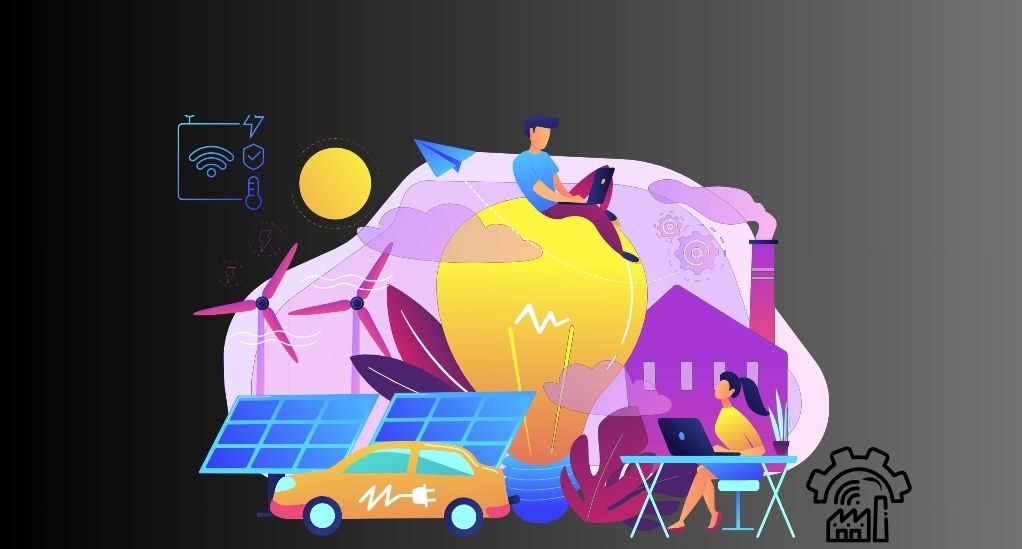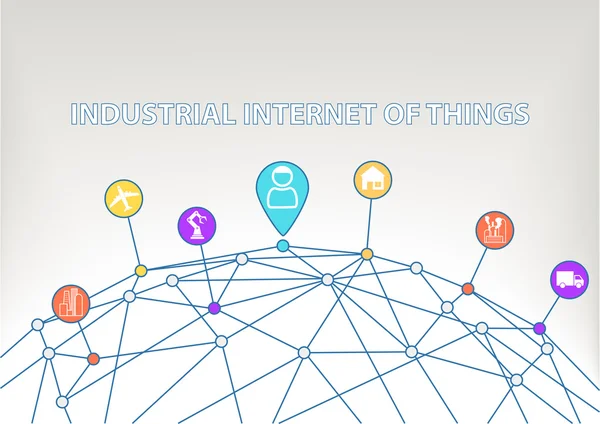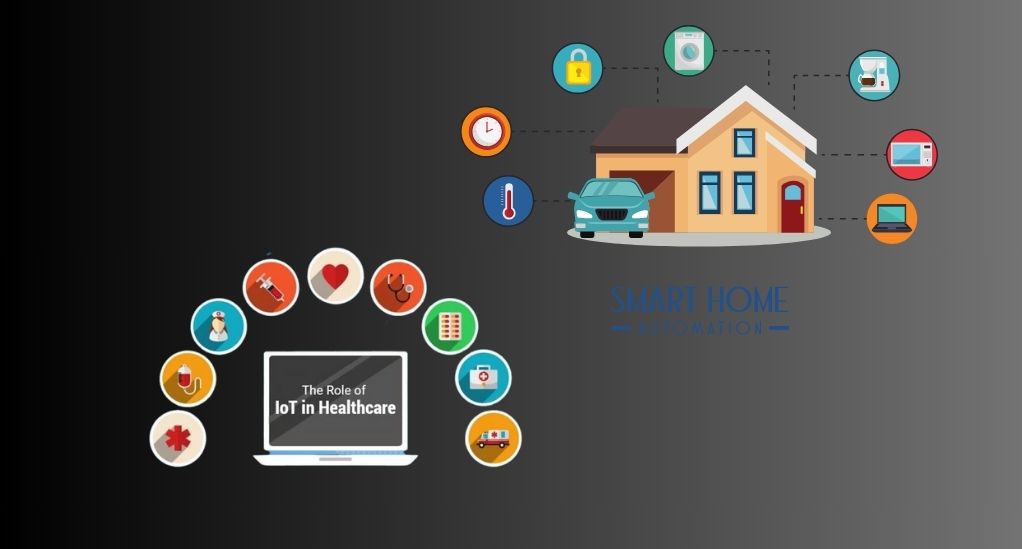Revolutionizing Manufacturing: A Comprehensive Guide to Industrial IoT (IIoT)
In the modern era, the manufacturing sector is undergoing a significant transformation, spearheaded by the integration of the Industrial Internet of Things (IIoT). This revolution is not just about connecting devices but reshaping the very fabric of manufacturing processes to be smarter, more efficient, and highly adaptive. In this section, we will delve deep into the emergence of IIoT and its symbiotic relationship with smart manufacturing.
The Emergence of Industrial IoT (IIoT)

The Industrial Internet of Things, often abbreviated as IIoT, represents the integration of internet-enabled sensors, machinery, and advanced analytics into the manufacturing ecosystem. It’s a subset of the broader Internet of Things (IoT), which encompasses connected devices and networks in various sectors including home automation and healthcare. The IIoT, however, is specifically focused on revolutionizing the industrial sector.
In the early stages, manufacturing units were standalone entities, operating based on manual inputs and observations. The advent of computers brought the first wave of automation, making processes faster and more accurate. Now, with IIoT, we are witnessing a paradigm shift where machines can communicate with each other, analyze data in real-time, and make autonomous decisions to optimize operations.
Timeline of IIoT Evolution
- 1990s: Introduction of basic computer automation in industries.
- 2000s: Emergence of connected devices and early IoT applications.
- 2010s: Integration of advanced sensors and analytics in industrial setups.
- 2020s: Widespread adoption of IIoT, with a focus on data-driven decision-making and predictive analytics.
The Connection between IIoT and Smart Manufacturing
Smart manufacturing is a broader concept that encompasses the use of IIoT as one of its critical components. It’s a holistic approach to manufacturing that leverages technology to enhance every aspect of the production process, from design to delivery. Here, we will explore how IIoT serves as the backbone of smart manufacturing.
- Data Analysis: While traditional manufacturing relies on periodic manual analysis, smart manufacturing leverages IIoT for real-time, automated data analysis, enabling quicker decision-making and adjustments.
- Maintenance: IIoT facilitates predictive maintenance, allowing for timely interventions before a breakdown occurs, as opposed to the reactive maintenance seen in traditional setups.
- Energy Management: Smart manufacturing optimizes energy consumption through IIoT by dynamically adjusting energy use based on real-time demand and other factors.
- Customization: IIoT enables higher customization in manufacturing processes, allowing for the production of tailored products based on individual customer preferences.
- Supply Chain: IIoT transforms the linear supply chain of traditional manufacturing into an integrated, dynamic network, enhancing efficiency and responsiveness.
- Safety & Compliance: Smart manufacturing enhances safety and compliance through real-time monitoring and analytics facilitated by IIoT, going beyond the standard protocols of traditional manufacturing.
Understanding the Basics of IIoT
In this section, we will delve deeper into the foundational elements of the Industrial Internet of Things (IIoT), demystifying the core components that constitute this revolutionary technology. By understanding the basics, we can better appreciate the transformative impact IIoT has on the manufacturing sector.
What is IIoT?

At its core, the Industrial Internet of Things (IIoT) is a network of interconnected devices and systems within the industrial sector that communicate with each other through the internet. This network facilitates the seamless exchange of data and information, enabling real-time monitoring and control of various processes within a manufacturing setup. The primary goal of IIoT is to enhance efficiency, productivity, and safety in industrial operations.
Key Characteristics of IIoT:
- Interconnectivity: Devices and systems are interconnected, facilitating seamless communication and data exchange.
- Intelligence: Equipped with smart sensors and analytics tools, IIoT devices can process data and make informed decisions autonomously.
- Real-Time Data Analysis: IIoT enables real-time monitoring and analysis of data, allowing for timely interventions and optimizations.
- Scalability: IIoT systems can be easily scaled up or down to meet changing demands, ensuring flexibility and adaptability.
- Security: With the integration of advanced security protocols, IIoT ensures the protection of sensitive data and infrastructure.
Key Components of IIoT
Understanding the components that make up an IIoT system is crucial in grasping its functionality and potential benefits. Here, we will explore the essential elements that constitute an IIoT setup.
- Sensors and Actuators
In the Industrial Internet of Things (IIoT), sensors and actuators are integral components, seamlessly collaborating to enhance operational efficiency. Sensors vigilantly monitor environmental factors, providing crucial data for real-time decisions. Meanwhile, actuators respond swiftly, translating the data insights into physical actions by manipulating elements like valves or motors, thereby fostering a dynamic and adaptable IIoT network. Together, they form the backbone of IIoT systems, steering them towards heightened adaptability and efficiency. - Network Connectivity
- Wired Connections: Includes Ethernet, fiber optics, etc., offering reliable and high-speed connectivity.
- Wireless Connections: Includes Wi-Fi, Zigbee, LoRa, etc., providing flexibility and ease of installation.
- Data Processing and Analytics
- Edge Computing: Processing data at the source, reducing latency and bandwidth usage.
- Cloud Computing: Centralized data processing and storage, offering scalability and remote access.
- User Interface
- Dashboards: Visual platforms that display real-time data and insights.
- Alert Systems: Notification systems that inform users of critical events or anomalies.
- Security and Compliance
- Encryption: Protecting data through cryptographic techniques.
- Authentication: Ensuring only authorized individuals can access the system.
Applications of IIoT in Manufacturing
In this section, we will explore the various applications of the Industrial Internet of Things (IIoT) in the manufacturing sector. The integration of IIoT technologies has paved the way for smarter, more efficient, and highly adaptive manufacturing processes.
Real-Time Monitoring and Analytics
One of the standout features of IIoT is its ability to facilitate real-time monitoring and analytics. This application is critical in modern manufacturing setups for several reasons:
- Production Efficiency: By monitoring the production lines in real-time, manufacturers can identify bottlenecks and inefficiencies promptly, allowing for immediate corrective actions.
- Quality Control: Real-time analytics enable manufacturers to maintain stringent quality control measures, detecting anomalies and defects early in the production process.
- Resource Optimization: Through continuous monitoring, manufacturers can optimize the utilization of resources, reducing waste and improving sustainability.
Predictive Maintenance
Predictive maintenance is another vital application of IIoT in manufacturing. It leverages data analytics and machine learning algorithms to predict when a machine or component is likely to fail, allowing for timely maintenance and reducing unexpected downtimes. Here’s how it works:
- Data Collection: Sensors collect data from various machine components, monitoring parameters like temperature, vibration, and pressure.
- Data Analysis: Advanced analytics tools analyze the collected data to identify patterns and trends.
- Predictive Modeling: Machine learning algorithms create predictive models that can forecast potential failures based on historical data and real-time inputs.
- Maintenance Scheduling: Based on the predictions, maintenance schedules are optimized to prevent breakdowns and extend the lifespan of the machinery.
Asset and Inventory Management
IIoT also plays a crucial role in asset and inventory management, streamlining operations and reducing costs. Here are some of the benefits:
- Real-Time Tracking: IIoT enables real-time tracking of assets and inventory, providing accurate and up-to-date information on stock levels and asset locations.
- Automated Reordering: Through intelligent algorithms, IIoT systems can automate the reordering process, ensuring optimal stock levels at all times.
- Asset Utilization: By monitoring asset usage patterns, manufacturers can optimize asset utilization, reducing idle time and improving productivity.
The Role of IIoT in Home Automation and Healthcare

While the Industrial Internet of Things (IIoT) is primarily associated with manufacturing and industrial applications, its influence extends far beyond these sectors. In this section, we will explore how IIoT is making significant strides in home automation and healthcare, revolutionizing the way we live and manage our well-being.
Smart Homes: A Brief Overview
The concept of a smart home is no longer a futuristic vision; it is a reality that many of us are embracing. Through the integration of IIoT technologies, our homes are becoming more intelligent, connected, and convenient. Here are some ways IIoT is shaping the smart home landscape:
- Home Automation Systems: These systems allow homeowners to control various aspects of their home remotely, including lighting, heating, and security systems.
- Energy Management: IIoT enables intelligent energy management solutions that optimize energy consumption, reducing costs and environmental impact.
- Voice-Activated Assistants: Devices like Amazon Alexa and Google Assistant are leveraging IIoT technologies to offer voice-activated control over various home functions.
- Predictive Maintenance: Similar to industrial applications, IIoT can facilitate predictive maintenance in homes, identifying potential issues with appliances before they become significant problems.
Healthcare: Enhancing Patient Care through IIoT
The healthcare sector is also witnessing a transformation, with IIoT playing a pivotal role in enhancing patient care and improving operational efficiencies. Here are some of the key applications of IIoT in healthcare:
- Remote Monitoring: IIoT enables remote monitoring of patients, allowing healthcare providers to track vital signs and other health parameters in real-time.
- Telemedicine: Through IIoT technologies, patients can consult with healthcare professionals from the comfort of their homes, reducing the need for physical visits.
- Asset Management: Hospitals and healthcare facilities can leverage IIoT for efficient asset management, tracking the location and status of medical equipment in real-time.
- Predictive Analytics: Similar to manufacturing, IIoT can facilitate predictive analytics in healthcare, helping to identify potential health issues before they become critical.
Security Concerns and Solutions
As the adoption of IIoT technologies continues to grow, so does the complexity and sophistication of the security challenges associated with it. In this section, we will delve into the various security concerns that are prevalent in the IIoT landscape and explore the solutions that are being developed to mitigate these risks.
Protecting Data in an IIoT Environment
The proliferation of connected devices and networks in the IIoT ecosystem has led to an exponential increase in the volume of data being generated and transmitted. This data, often sensitive and critical, needs to be protected against unauthorized access and cyber-attacks. Here are some of the primary concerns and the strategies to address them:
- Data Encryption: Utilizing advanced encryption techniques to protect data during transmission and storage.
- Access Control: Implementing robust access control mechanisms to ensure that only authorized individuals can access sensitive data.
- Firewalls and Intrusion Detection Systems: Employing firewalls and intrusion detection systems to monitor and block malicious activities.
- Secure Communication Protocols: Adopting secure communication protocols to prevent eavesdropping and data tampering.
Strategies for Mitigating Security Risks
To safeguard the IIoT infrastructure against potential threats, organizations are adopting various strategies that focus on proactive risk management and response. Here are some of the key strategies being employed:
- Security by Design: Integrating security features right from the design phase of IIoT systems, ensuring that security is a fundamental component and not an afterthought.
- Regular Security Assessments: Conducting regular security assessments to identify vulnerabilities and implement necessary countermeasures.
- Incident Response Plans: Developing incident response plans to quickly address any security breaches and minimize potential damages.
- Employee Training and Awareness: Conducting regular training programs to enhance employee awareness about security best practices and protocols.
The Future of IIoT

As we navigate through the rapidly evolving landscape of the Industrial Internet of Things (IIoT), it becomes imperative to cast a discerning eye towards the future. In this section, we will explore the emerging trends that are set to shape the trajectory of IIoT and ponder upon the potential developments that promise to redefine the industrial landscape.
Emerging Trends in IIoT
The world of IIoT is a dynamic one, with new trends constantly emerging on the horizon. Here, we delve into some of the promising trends that are poised to make a significant impact in the coming years:
- Edge Computing: As data volumes continue to grow, edge computing will play a critical role in processing data closer to the source, reducing latency and bandwidth usage.
- Artificial Intelligence (AI) and Machine Learning (ML): AI and ML will further integrate with IIoT, offering advanced analytics and predictive capabilities, enhancing decision-making processes.
- 5G Connectivity: The rollout of 5G networks will facilitate faster and more reliable connectivity, enabling real-time communication and data transfer in IIoT systems.
- Digital Twins: The concept of digital twins, where a virtual replica of a physical system is created, will gain prominence, allowing for better monitoring, analysis, and control of industrial processes.
- Blockchain for Security: Blockchain technology may find applications in IIoT for ensuring data integrity and security, offering a decentralized approach to data management.
The Road Ahead: Predictions for the Future of IIoT
As we look towards the future, it is evident that IIoT will continue to be a driving force in the industrial sector. Here, we make some predictions about the potential developments in the IIoT landscape:
- Integration with Other Industry 4.0 Technologies: IIoT will integrate seamlessly with other Industry 4.0 technologies, creating a cohesive ecosystem that fosters innovation and efficiency.
- Customized Solutions: As industries evolve, we can expect to see more customized IIoT solutions that cater to the specific needs and challenges of different sectors.
- Sustainability and Green Manufacturing: IIoT will play a pivotal role in promoting sustainability and green manufacturing practices, helping industries reduce their environmental footprint.
- Workforce Transformation: The integration of IIoT technologies will lead to a transformation of the workforce, with a greater emphasis on skills related to data analytics, machine learning, and cybersecurity.
Conclusion
In the ever-evolving landscape of the Industrial Internet of Things (IIoT), the synergy between sensors and actuators stands out as a testament to the power of collaboration and innovation. Sensors, with their vigilant data collection capabilities, lay the foundation for informed decision-making, while actuators bring these decisions to life, translating digital insights into tangible actions. As we delve deeper into the world of IIoT, it’s evident that the seamless interplay between these components is pivotal in driving operational efficiency and adaptability. Their combined prowess not only forms the backbone of IIoT systems but also charts the course for a future where industries are more responsive, dynamic, and efficient. As we look ahead, it’s clear that the fusion of sensors and actuators will continue to be at the heart of IIoT’s transformative journey, steering industries towards a horizon of endless possibilities.


Leave a Reply